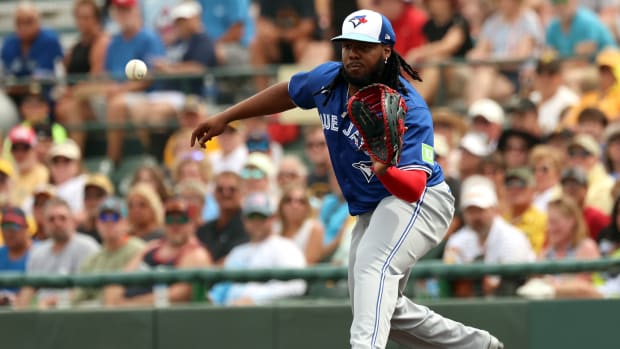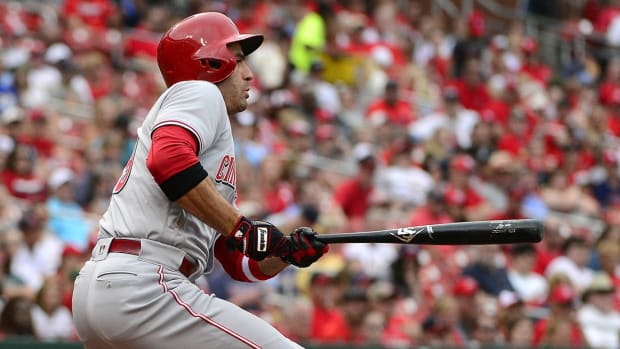Bassitt Finding Clock Comfort Before Opening Day
DUNEDIN, F— As the seconds ticked down on the pitch clock, Chris Bassitt held.
And held.
And held.
Mere milliseconds before the clock hit zero, the righty finally began his motion. Bassitt narrowly avoided a clock violation and caught Orioles 2B Terrin Vavra staring at a 92 MPH sinker for the strikeout.
The clock-induced mind games aren't fun for Bassitt, the righty said, but "it's the game now," and he's taking full advantage. With velocity trending back up and Bassitt's bag full of pitches, the Blue Jays starter used every tool in his arsenal to get ready for Opening Day.
“If you can be aware of the clock and still execute a pitch, it's going to work to your advantage,” Manager John Schneider said. “We're seeing that kind of play out in real time and [Bassit is] really good at it. You know, he starts thinking about that stuff at eight o'clock in the morning.”
As the first few Baltimore batters stepped in on Saturday, Bassitt sped up and slowed down. He pushed the clock to the brink and then pitched with a full slate of seconds remaining. He started the game against two Orioles regulars—Vavra and Gunnar Henderson—and sat them both down with strikeouts.
In the second inning, Bassitt's gamesmanship turned from timing to his many tools. After busting out the high heat to strike out Josh Lester, Baltimore’s next batter, Daz Cameron, got a taste of the opposite. Bassitt dropped in a rainbow curveball at 68.6 MPH to start the at-bat, catching Cameron leaning over the pitch with his slowest pitch of the game.
By the end of the second frame, Baltimore batters had seen seven different pitches. Most pitchers bust out their secondary stuff a second time through the batting order, but Bassitt has an entire arsenal of secondaries.
If anything, the Blue Jays starter wanted to mix his pitches more than he ended up doing on Saturday. In the regular season, he'll be a pitcher, but at this point in spring he has to be "a thrower" at points, as he works to build his arm strength back up and top out velocity ahead of meaningful games. Of his 61 pitches, 30 were sinkers. He averaged 92.8 MPH on his primary pitch, which remains 1.6 MPH below his average from last year but up from last week's outing.
"You always want to get guys out," Bassitt said. "But at the same time you have to truly understand that you gotta get ready for a season. I think a lot of people kind of forget what Spring Training has meant for so long."
Bassitt used his many pitches and the clock to his advantage on Saturday, but the rule changes also caught him at one point. With Gunnar Henderson at the plate in the fourth, Bassitt began and stopped his motion toward home amid confusion around the clock and the Baltimore batter's readiness.
Just like Spring Training is the time to work on pitches and build up arm strength, it's time to work through the kinks of changed regulations, too. So he can use the new rules to his advantage when the games matter, Bassitt has to learn their limits in spring.
"We've played this game for so long and things are different now," Bassitt said. "I'm happy it happened now rather than in the season. Now I know."






